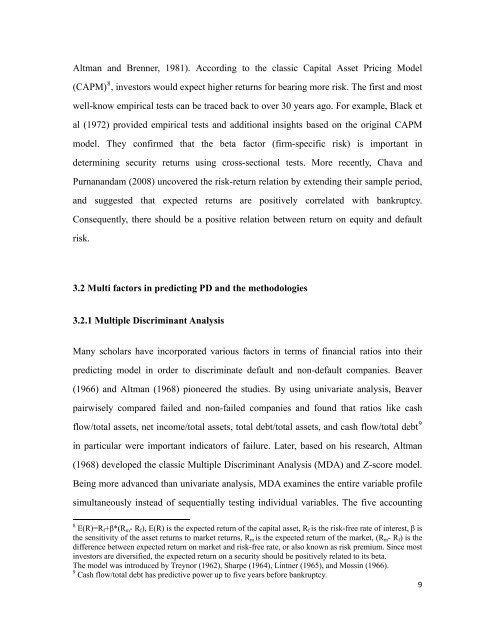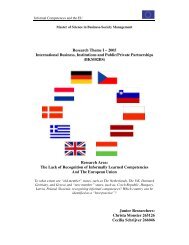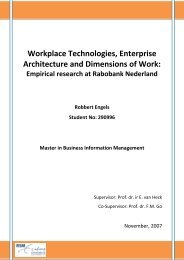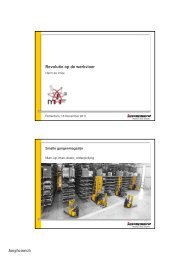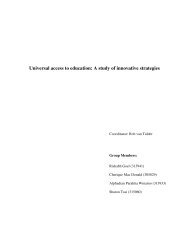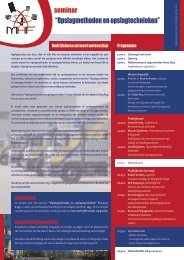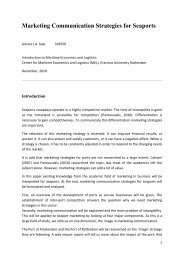Financial Ratios as Predictors of Failure: Evidence from ... - ERIM
Financial Ratios as Predictors of Failure: Evidence from ... - ERIM
Financial Ratios as Predictors of Failure: Evidence from ... - ERIM
Create successful ePaper yourself
Turn your PDF publications into a flip-book with our unique Google optimized e-Paper software.
Altman and Brenner, 1981). According to the cl<strong>as</strong>sic Capital Asset Pricing Model<br />
(CAPM) 8 , investors would expect higher returns for bearing more risk. The first and most<br />
well-know empirical tests can be traced back to over 30 years ago. For example, Black et<br />
al (1972) provided empirical tests and additional insights b<strong>as</strong>ed on the original CAPM<br />
model. They confirmed that the beta factor (firm-specific risk) is important in<br />
determining security returns using cross-sectional tests. More recently, Chava and<br />
Purnanandam (2008) uncovered the risk-return relation by extending their sample period,<br />
and suggested that expected returns are positively correlated with bankruptcy.<br />
Consequently, there should be a positive relation between return on equity and default<br />
risk.<br />
3.2 Multi factors in predicting PD and the methodologies<br />
3.2.1 Multiple Discriminant Analysis<br />
Many scholars have incorporated various factors in terms <strong>of</strong> financial ratios into their<br />
predicting model in order to discriminate default and non-default companies. Beaver<br />
(1966) and Altman (1968) pioneered the studies. By using univariate analysis, Beaver<br />
pairwisely compared failed and non-failed companies and found that ratios like c<strong>as</strong>h<br />
flow/total <strong>as</strong>sets, net income/total <strong>as</strong>sets, total debt/total <strong>as</strong>sets, and c<strong>as</strong>h flow/total debt 9<br />
in particular were important indicators <strong>of</strong> failure. Later, b<strong>as</strong>ed on his research, Altman<br />
(1968) developed the cl<strong>as</strong>sic Multiple Discriminant Analysis (MDA) and Z-score model.<br />
Being more advanced than univariate analysis, MDA examines the entire variable pr<strong>of</strong>ile<br />
simultaneously instead <strong>of</strong> sequentially testing individual variables. The five accounting<br />
8<br />
E(R)=Rf+β*(Rm- Rf), E(R) is the expected return <strong>of</strong> the capital <strong>as</strong>set, Rf is the risk-free rate <strong>of</strong> interest, β is<br />
the sensitivity <strong>of</strong> the <strong>as</strong>set returns to market returns, Rm is the expected return <strong>of</strong> the market, (Rm- Rf) is the<br />
difference between expected return on market and risk-free rate, or also known <strong>as</strong> risk premium. Since most<br />
investors are diversified, the expected return on a security should be positively related to its beta.<br />
The model w<strong>as</strong> introduced by Treynor (1962), Sharpe (1964), Lintner (1965), and Mossin (1966).<br />
9<br />
C<strong>as</strong>h flow/total debt h<strong>as</strong> predictive power up to five years before bankruptcy.<br />
9


